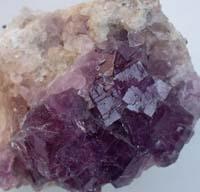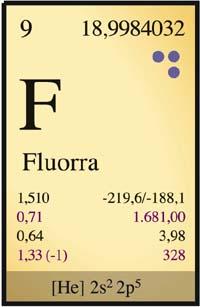Henri Moissan isolated fluoride

The time and place were suitable for everyone who worked in science. In the 19th century, the current beliefs among scientists were gradually falling. And that caused the discoveries to happen in different fields of science. Marie Curie gave the testimony of this change of thought. He wrote and read at the Sorbonne the lecture of the beginning of the course 1906, in which he exposed the desire and desires of scientists to incorporate new ideas in that decade.
In that same decade, mathematician Lebesgue reflected on integrals. The integral defined earlier by Riemman did not serve to understand some aspects of the Fourier analysis and it was necessary to redefine it. He laid the foundation for the new integration theory while working at the Sorbonne.
Fluoride insulation by electrolysis
In another field of science, Chemistry, Henri Moissan by the periodic table
managed to isolate an element, the fluoride. This discovery earned him the 1906 Nobel Prize in Stockholm and, once obtained, as if he had achieved all the goals of life, he died suddenly shortly afterwards.
The feat of isolating a chemical element was even more remarkable in the case of fluoride, since it is a gas and is the most electronegative and reactive element known. Think about the reactive, also eat glass.
Before Moissan other chemists tried to isolate fluoride, but did not succeed. George Gore, for example, suffered a terrible accident during his life. They say their lab exploded. From the calcium fluoride mineral (CaF 2) that isolated the gore fluor, also known as fluorite or emerald of Bohemia. However, as already indicated, fluoride is very reactive and, in addition, has greater reaction capacity in the gaseous state. Gore's laboratory combined fluoride gas with hydrogen gas, causing an explosive explosion.

To isolate fluoride, Moissan used electrolysis. Electrolysis with potassium fluoride (KF) and hydrofluoric acid (HF), but at the same time, carefully distributed fluoride gas and hydrogen gas to prevent explosion. Currently this process is still used to obtain fluoride.
Fluor, everyday theme
Fluoride is now known, especially because toothpastes contain compounds that contain fluoride. The compounds used to care for teeth are, among others, sodium fluoride (NaF), stamping difluoride (SnF 2) and sodium monofluorophosphate (Na 2 PO 3 F). They therefore add fluoride to water sources in some cities as a measure of teething protection.
But it also has more uses. For example, cameras used to receive infrared light have special lenses with fluorite. Uranium hexafluoride (UF 6) is used for the distribution of uranium isotopes. Other compounds, such as dichlorodifluoromethane (CF 2 Cl 2), were used in aerosols and air conditioning, but their use is currently prohibited by affecting the ozone layer.







